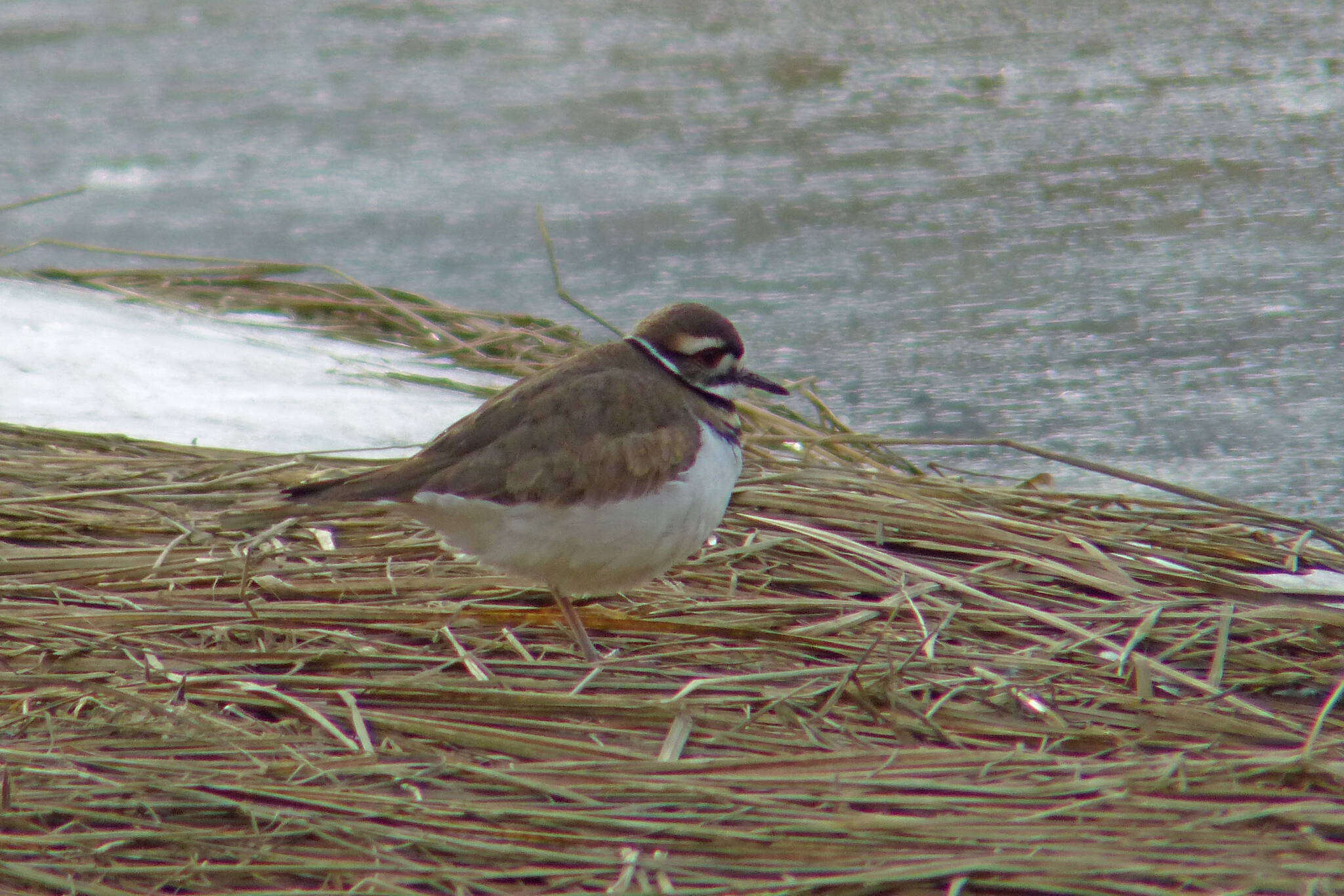January whined its way toward its end, with seemingly interminable days of warm rain — what a miserable excuse for a winter. And then — surprise! A starlit night, a nice day, lower temperatures, and then some lovely snow. A great way to end one month and begin the next one. Yes, of course, I had to shovel my deck and the berm left by the city plow, but a neighbor helped with the heavy part of the berm, and altogether the wonderful white stuff was well worth the labor.
So it was “Find the snowshoes and let’s go see what we can see.” Partway up the Eaglecrest road, no parking was readily available near the lower meadows, so we ended up plonking around the ungroomed lower loop. We found several deer trails, partly obscured by recent snow. Snowshoe hares had been out in the night. And there were several fresh tracks of squirrel and weasel (no doubt in its white winter coat). There were no little birds in the trees and no signs of porcupine or grouse, which was unusual up there. But it felt like winter was happening!
Early in February, after a good snowfall, I wandered down the east side of Mendenhall Lake on snowshoes, relearning an old route. The snow had covered all the animal tracks, if there had been any, and draped the small trees with heavy white shawls. Strangely, the fog created an eerie illusion that the big rock peninsula on the west side of the lake had somehow advanced, so that it now approached the beach on the east side. Reassuringly, when the fog lifted for a while, the peninsula was back in its usual place. The highlight of the walk was seeing dippers foraging in the lower reaches of Steep Creek, one working along the edge of the creek and a second one soon joining.
In mid February, more snow…replacing what the rains had wrecked. A friend and I went to the meadows by Peterson Creek on snowshoes; that’s a place where we’ve had good animal tracking sometimes. Off we went, but our stroll was curtailed by high water in the numerous sloughs; it hadn’t been cold enough to freeze them. So the walk was short, but we found squirrel tracks, bounding from creek-side to the trees, deer tracks out in the open, and a long trail of porcupine tracks wandering hither and thither. The creek was running high and no dippers in sight.
A few days later, during a little snowfall, we wandered over the Outer Point Rainforest Trail. Along the forest trail, a wren did not care to be watched and zipped speedily under some logs. Out on the water, a little group of goldeneye ducks cruised lazily along. The glaucous-winged gulls loafed on rocky points and a few of them floated quietly, heads tucked next to the body, looking totally relaxed. Just one bird was actively foragin — a small grebe made repeated dives.
On a rugged bedrock outcrop not far above the high tide line, a number of little potentilla plants flower in the summertime. On this February day, we expected to see only flattened brown leaves and decrepit seed stalks. But behold! There were ever-so-tiny green leaves peeping out from behind the protection of the old brown leaves!
In the Dredge Lakes area, another friend showed me a lovely colony of a spectacularly orange fungus, growing on an old cottonwood snag. This is Flammulina populicola or velvet shank, a gilled saprophyte that grows only on dead poplars and aspens.
It has the unusual habit of fruiting and producing spores in the winter (hence an alternative common name of winter fungus). It has special ice-binding proteins that keep ice crystals from ripping its cell walls (the proteins are similar to those found in diatoms and bacteria that inhabit icy waters). The brilliant orange color is best developed in light environments; if it is growing in the dark, the fungus is whitish.
A little walk on the dike trail began in a light snowfall but — in true Juneau style — it soon changed to rain. There were throngs of geese grazing out on the flats near the open water, a scattering of goldeneyes and buffleheads in a lagoon near the trail, but no mallards. An odd lump moseying along the edge of a not-too-distant slough attracted my attention and, with binoculars, it turned into a killdeer. I’ve been told that it is not very unusual to see killdeer here and in the Fish Creek estuary across the channel in the winter, when other shorebirds have gone south.
Thanks to Jenifer Shapland for putting a name to the orange fungus.
• Mary F. Willson is a retired professor of ecology. “On The Trails” is a weekly column that appears every Wednesday.

